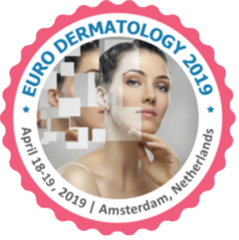Samaa Samir Kamar
Cairo University, Egypt
Title: wound healing in type-I diabetic rat: Histological and immunohistochemical studies
Biography
Biography: Samaa Samir Kamar
Abstract
Management of diabetic wounds remains a major challenge in the medical field, mostly due to incompetent outcomes of treatments. Curcumin has been documented as anti-inflammatory, antioxidant, antimicrobial and antineoplastic agent in addition to wound healing activities. However, its poor aqueous solubility and impaired skin permeation handicap its topical pharmaceutical usage. Hydrogel loaded curcumin nanoparticle (Cur-NP/HG) could overcome this pitfall and enable extended topical delivery of curcumin. Rat model of diabetes mellitus (DM) type I was induced using single injection of 70 mg/kg streptozotocin (STZ) followed by full thickness skin wound. Rats were divided into four groups. GpI: control non-diabetic, GpII: diabetic non-treated, GpIII: diabetic treated with topical curcumin hydrogel (Cur/HG) and GpIV: diabetic treated with topical Cur-NP/HG. Histological assessment of epidermal regeneration, dermo-epidermal junction, leukocyte infiltration and collagen deposition, in addition to immunohisto-chemical staining for vascular endothelial growth factor (VEGF) and aquaporin-3 (AQP3) were performed. Diabetic rat possessed impaired wound closure, persistence of inflammation and decreased collagen deposition as compared to non-diabetic control. Application of Cur/HG induced partial improvement of the healing process in diabetic rats. Cur-NP/HG treatment provoked obvious improvement of the healing process with complete re-epithelization, intact dermo-epidermal junction, reorganization of the dermis with significantly increased collagen deposition and VEGF and AQP3 expression. These results illustrated that, Cur-NP/HG have effectively improved the healing process in diabetic skin wound with substantial differences in the wound healing kinetics compared to wounds that received Cur/HG.

